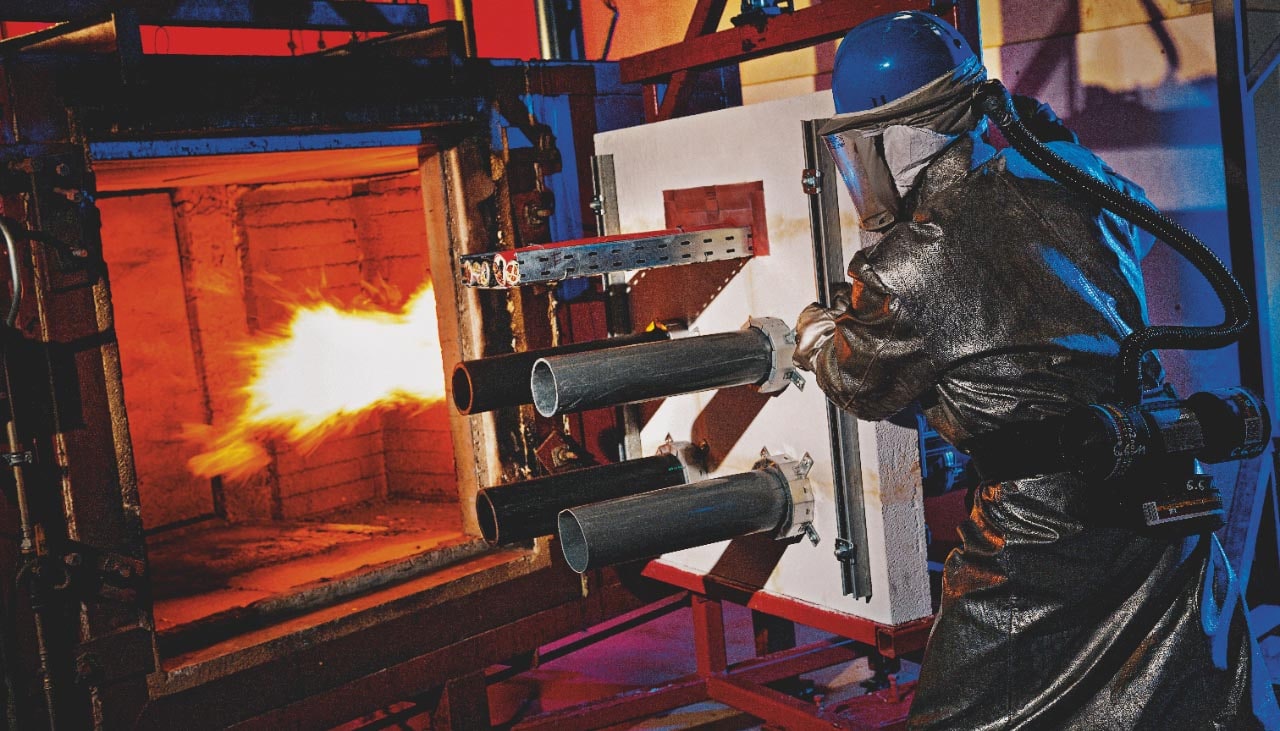- Home
- Company
- Company
- About Hilti
- Research And Development

Research and Development
Where creating the exceptional is expected
What can we build that’s better? Stronger? Safer? Since 1941, the name Hilti has been synonymous with innovation. Everything we do helps build better futures—and that includes the future of the construction industry.
Every day at our research, development and testing centers in Europe, North America and Asia, Hilti engineers and experts are tinkering, testing and imagining new ways to make your work easier, safer and more productive. We work directly with customers about the challenges they face and work to solve them with better, smarter products. We work with various universities and independent research laboratories to tackle the most challenging technical problems. In other words, we never stop improving—because you never stop working.
Read more about our product testing below.

Post-installed anchor testing
The jobsite—where installer experience can vary dramatically—is no place to experiment with anchors.
That’s why we thoroughly test and document the performance parameters and application and installation guidelines for every Hilti anchor. It’s also why we offer fastening systems design software to help automate the process of finalizing your choice with confidence.
But we’re not the only ones to document Hilti performance. Our nearly 300 pieces of anchor documentation include specifications and approvals from International Code Council-Evaluation Service (ICC-ES), UL, Certificate of Label Approval, NSF LEED and other industry-recognized organizations.
If you have questions about past anchoring problems or installation concerns for upcoming applications, connect with our Customer Service team for one-on-one guidance.
ICC-ES Acceptance Criteria AC308 for Post-Installed Adhesive Anchors
ICC-ES Acceptance Criteria AC193 for Mechanical Anchors
HIlti tests to these criteria include:
- Reference tests determining tension capacity in both low-strength and high-strength cracked and uncracked concrete
- Reliability tests identifying anchor sensitivity to various installation processes and environmental considerations
- Service-condition tests across a variety of installation positions and application parameters
For masonry applications, we adhere to the following test standards:
- ICC-ES Acceptance Criteria AC58 for Adhesive Anchors in Masonry Elements
- ICC-ES Acceptance Criteria AC101 for Expansion Anchors in Masonry
- ICC-ES Acceptance Criteria AC106 for Screw Anchors in Masonry

Firestop system testing
Take confidence in documented, lab-tested performance for thousands of firestop products and systems
Whether your biggest concern is withstanding a potential fire emergency years down the road—or simply complying with current construction codes regarding firestop installation—Hilti offers multiple products and resources to foster confidence.
Our in-house lab conducts firestop testing in accordance with ASTM E814 / UL 1479 for through-penetration firestop systems and ASTM E1966 / UL 2079 for construction-joint firestop systems. That means you can trust the F-rating and T-rating for each Hilti firestop system assembly. Optional tests are also frequently conducted to determine air leakage ratings (L-rating])and water leakage ratings (W-rating) of a firestop system assembly to ensure they meet your requirements.


Deck Fastener Testing
Hilti Mechanical Deck Fasteners are subjected to rigorous testing to ensure their performance
Gain insight into the performance of various styles of Hilti mechanical deck fasteners for your applications with deck fastener testing that covers small element connection tests used to determine fastener pullout, pullover, and lap-joint shear strength and stiffness.
The results generated by these deck fastener testing steps can be analyzed and used as a predictive model to calculate performance of larger steel deck diaphragm assemblies or systems.
For your confidence, this deck fastener testing is conducted in accordance with the following industry-accepted standards:
- American Iron and Steel Institute (AISI) S905 Test Methods for Mechanically Fastened Cold-Formed Steel Connections
- American Society for Testing and Materials (ASTM) E1190 Standard Test Methods for Strength of Power-Actuated Fasteners Installed in Structural Members
- International Code Council Evaluation Service (ICC-ES) AC70 Acceptance Criteria for Fasteners Power-Driven into Concrete, Steel and Masonry Elements
- ICC-ES AC118 Acceptance Criteria for Tapping Screw Fasteners
Full-scale diaphragm system tests evaluate the performance characteristics of deck fasteners in an entire integrated steel deck diaphragm assembly. You can use the resulting data in predictive modeling that addresses varying configurations of base steel, steel deck, spans, and specific fastener combination options for your applications.
These tests are conducted in accordance with the following standards:
- International Code Council Evaluation Service (ICC-ES) AC43 Acceptance Criteria for Steel Deck Roof and Floor Systems
- American Iron and Steel Institute (AISI) S907 Cantilever Test Method for Cold-Formed Steel Diaphragms
- American Society for Testing and Materials (ASTM) E455 Standard Test Method for Static Load Testing of Framed Floor or Roof Diaphragm
- Constructions for buildings
